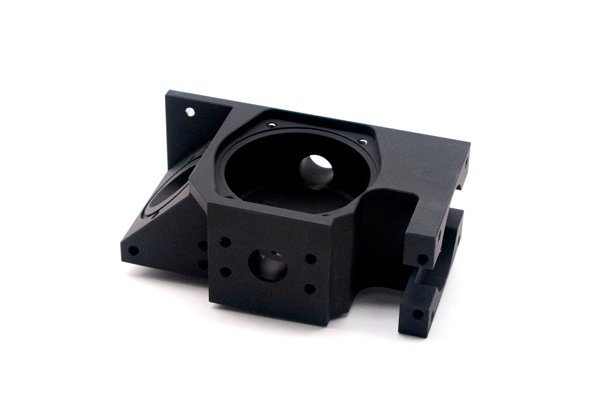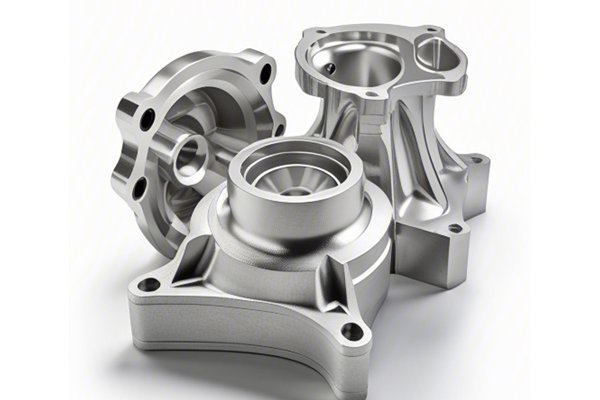Opening:
Did you know that the surface finish of a CNC prototype can dramatically affect its performance and longevity? In a recent survey, over 65% of engineers reported that inconsistencies in surface smoothness led to product failures in their projects. This alarming statistic highlights the critical role that surface quality plays in CNC machining, and it brings to the forefront a vital question: what standards can CNC prototypes meet regarding surface smoothness and quality?
to CNC Machining Surface Quality
Computer Numerical Control (CNC) machining has revolutionized manufacturing by delivering highly accurate and efficient production capabilities. However, the quality of the final product hinges not just on the dimensions but also on the surface finish. Surface finish affects not only aesthetic appeal but also functional characteristics such as friction, wear resistance, and fatigue strength.
Factors that determine surface quality include tool selection, machining parameters (speed, feed rate, and depth of cut), the material being machined, and the technology applied during the manufacturing process itself. With advancements in technology and techniques, CNC prototypes can achieve different levels of surface smoothness, each meeting various industry standards.
To gauge the quality of a CNC prototype, surface roughness is typically measured using parameters such as Ra (arithmetic average roughness), Rz (average maximum height of the profile), and others defined by standards like ISO
Ra (Arithmetic Average Roughness)
This metric provides an average of the deviations from the mean line of the surface profile, indicating the smoothness of the surface. For instance, an Ra value of 0.2 micron is generally considered exceptional for precision engineering applications.
Rz (Average Maximum Height of the Profile)
Rz looks at the five highest peaks and five lowest valleys in the surface profile, offering a broader perspective than Ra and accounting for larger irregularities on the surface.
These measurements can be assessed via specialized instruments like surface roughness testers, enabling manufacturers to meet the pre-defined standards based on application requirements.
Industries such as aerospace, automotive, and medical devices impose stringent guidelines regarding surface finish, emphasizing the importance of quality control. Here are some key standards:
ISO 1302
This international standard communicates the requirements for specifying surface texture in technical drawings, providing consistent language for engineers and manufacturers to adhere to.
ASME B46.1
This American standard addresses surface irregularities and serves as a guideline for measurement methods and procedures.
ASTM E2539
This standard is specific to the surface integrity of machined components used in abrasive environments, relevant for various tooling and precision parts.
Adopting these standards not only ensures regulatory compliance but also enhances product reliability and performance.
So, how can manufacturers ensure that CNC prototypes meet high standards of surface smoothness? The following strategies can be employed:
Tool Selection:
Using the right tools, including carbide and high-speed steel end mills, can dramatically influence the surface finish. Tools with sharp edges can minimize tearing and burr formation on the material surface.
Machining Parameters:

Carefully adjusting speed, feed rate, and depth of cut based on the material can lead to superior results. For instance, a slower feed rate often leads to a finer finish.
Post-Machining Processes:
Processes such as polishing, grinding, and electropolishing can enhance surface smoothness. Implementing these post-machining treatments allows for achieving specifications that raw CNC machining might not meet.
Material Consideration:
Each material behaves differently under machining conditions. For example, aluminum alloys tend to provide better surface finishes compared to some steels or plastics. Understanding material properties helps in setting appropriate parameters.
To maintain consistent surface quality, quality control measures must be integrated into the production process:
Regular Inspection:
Employing non-destructive evaluations (NDE) such as laser scanning or surface profile mapping can provide insight into surface conditions. Regular inspections help in identifying any deviations from standards early in the process.
Calibration of Equipment:
Regularly calibrating CNC machines and measuring tools ensures accuracy in the machining process. This diligence prevents small deviations that can lead to larger quality issues.
Data Tracking:
Utilizing software to track and analyze data on surface quality can help identify patterns. This analysis can lead to proactive measures before flaws affect production.
Despite best efforts, achieving the ideal surface finish can sometimes be a challenge. Here are a few factors contributing to difficulties:
Tool Wear:
Tools lose their effectiveness over time. Monitoring tool wear and replacing tools when necessary can prevent surface irregularities.
Vibration and Machine Stability:
Vibrations during machining can lead to decreased surface quality. Ensuring that machines are properly set up and stable minimizes these disturbances.
Operator Skill:
The expertise of the machine operator plays a crucial role in achieving quality finishes. Continuous training and development ensure that operators are adept at refining processes for optimal results.
: Ensuring High Standards for CNC Surface Smoothness
In conclusion, achieving the desired surface smoothness in CNC prototypes is pivotal for the quality and longevity of manufactured parts. By understanding measurement standards, implementing proper strategies, integrating rigorous quality control measures, and addressing common challenges, manufacturers can ensure their products meet the required specifications.
This blog underscores the importance of surface finish in CNC machining. As technology continues to advance and industries demand higher precision, it is essential for manufacturers to prioritize surface quality. Reflecting on these considerations will not only help to meet client expectations but can also enhance product reliability, setting a foundation for successful operations in a competitive landscape.
Whether you’re an engineer, a project manager, or a decision-maker in manufacturing, understanding and prioritizing CNC surface quality will play a significant role in your production success. Keep these standards in mind as you embark on your next project, and ensure that surface smoothness and quality do not become secondary considerations in the quest for excellence. Let’s elevate the standards of precision engineering together!






